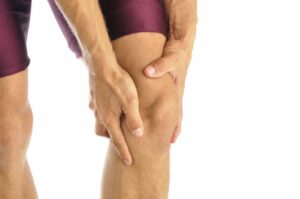 Patella, or kneecap, may fully or partially dislocate outside of its regular position, usually around the outside of the knee. The patient will experience pain and swelling in the knee joint along with an obvious displacement of the kneecap.
Patella, or kneecap, may fully or partially dislocate outside of its regular position, usually around the outside of the knee. The patient will experience pain and swelling in the knee joint along with an obvious displacement of the kneecap.
Outstanding and salient board certified orthopedic surgeons Dr. Steven Thomas and Dr. Gregory Bigler provide advanced treatments for patella dislocation to patients in Las Vegas, Nevada and other towns and communities in this area of the southwest.
How the Dislocation Occurs
The patella typically lies within the patella-femoral groove. It is designed only to slide vertically within the groove. However, when the patella moves or is moved to the outside of this groove, a dislocation takes place. With the dislocation, the patella moves onto the bony head of the femur, which is clinically called the lateral femoral condyle.
In some cases, the patella may not fully dislocate, but may sublux, which means it moves partially out of its normal position. Patients should note that a patella dislocation is different from the dislocation of the knee joint itself, which is a significantly more severe and traumatic injury.
Conservative Treatment of Patella Dislocation
Following a patella dislocation, the surgeon may recommend application of the RICE principles to the injured knee. This involves rest, ice, compression and elevation. The patient can apply ice for about 10 to 15 minutes every hour in the beginning, and reduce it to two or three times a day as the symptoms and swelling subside.
The patient must take a rest break from any sporting activity. An athlete who has experienced one episode of patella dislocation is usually vulnerable to another dislocation. A knee support can be used to protect the joint. The patient may use patella stabilizing braces that are specially designed to support the kneecap.
Once the acute symptoms have been resolved, the patient will require a full knee strengthening rehabilitation program to help avoid future recurrence. This will include specific exercises for the vastus medialis muscle on the inside of the quadriceps.
Treatment for Severe Cases
An orthopedic surgeon specializing in sports medicine will first confirm the diagnosis of patella dislocation. The symptoms of this condition can sometimes be similar to an ACL injury due to an audible crack or pop up sound, and the feeling of the knee giving away.
The surgeon will address the pain by prescribing anesthetic medication and repositioning the patella if it has not already relocated. NSAIDs such as ibuprofen may be prescribed to mitigate pain, swelling and inflammation.
Patella-femoral taping techniques may be used in some cases to provide additional support for the patella. This becomes particularly useful if the patient wants to be mobile and there is a risk of further dislocations. The surgeon may order diagnostic imaging tests such as an x-ray or MRI, or perform an arthroscopy to determine the precise extent of the injury.
Surgery may be recommended in a situation if there are loose fragments of the bone or other serious structural damage to the knee. Sterling and astute board certified orthopedic surgeons at Thomas & Bigler Knee & Shoulder Institute receive patients from Las Vegas, Nevada and other neighborhoods and communities in The Battle Born State for the treatment of patella dislocation.
If you would like to schedule an appointment or learn more about the Knee and Shoulder Institute procedures & treatments performed by Las Vegas, Nevada board certified surgeons Steven C. Thomas, MD and Gregory T. Bigler, MD. call (702) 933-9393; Physical Therapy (702) 933-9393.
